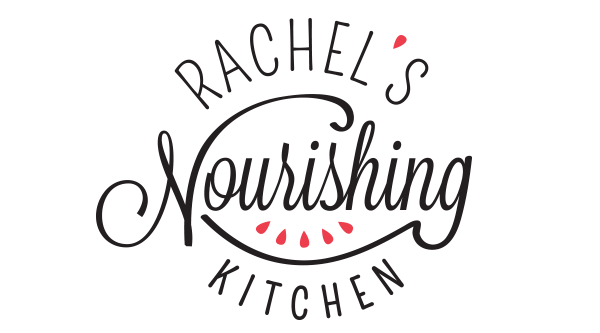In my last post, I shared what it means for a food to be considered “organic” and why it’s important to eat organic food as often as possible. Be sure to check it out if you missed it!
Maybe you’re thinking, “Ok, so I get that it’s better for my health to eat organic, but it’s too expensive! I can’t afford it.”
My mission today is to show you how eating organic, nourishing foods is not only doable but affordable, too! Visiting Community Organics would be well worth your time if you are serious about making the switch to organic produce.
1) Plan Your Meals
I know, I know.
I realize this isn’t the most glamorous recommendation, but it will save you a LOT of money. I actually wrote a whole post about how to plan your meals and keep them exciting. The post includes some of my favorite tools and services to use to make it easier, AND my top tips for stocking your pantry, so you will always be prepared to make a nourishing meal at a moment’s notice. To learn more about my six tips for meal planning made easy, click here.
2) Get savvy and buy selectively organic
Certain fruits and veggies, known as the “Dirty Dozen,” are the most contaminated with pesticides. Other fruits and veggies are less likely to have pesticide/chemical residues, so they’re called the “Clean 15.” Download this app on your phone for a FREE guide that shows each list! If we don’t have the option to buy something organic or are just looking to save a buck, we buy the Dirty Dozen organic and save money by buying the Clean 15 conventional (non-organic).
3) Support a farmer & buy local
Bill and I have used a service called Hometown Harvest that delivers a customized bag of locally sourced fruit, veggies, and eggs to our doorstep every Friday morning for about $45. About 95% of everything they offer is organic (some items aren’t possible to find locally and certified organic in certain seasons), and is all produced and harvested with the help of good quality equipment (such as that found on fastline) and hard work from the local farmers. They also sell organic animal products.
Another local service that does something similar and has been featured on Shark Tank is called Hungry Harvest. I love what they’re about:
1 in 5 fruits and veggies go to waste because of aesthetic imperfections or logistical inefficiencies.
We believe that no fresh produce should go to waste. That’s why we save this delicious produce and deliver it to your door.
If you don’t live in the Baltimore Metro/DC/Frederick area and can’t access these services, you can find a farmer’s market or Community Supported Agriculture (CSA) farm share near you by visiting LocalHarvest.org.
4) Focus on frozen
9 times out of 10 the organic frozen produce at the store is cheaper than fresh, especially if the fruit or vegetable is out of season. Stock up on frozen produce, especially when it’s on sale! This includes everything from frozen fruit and veggies to frozen grains like rice and quinoa. Which brings me to my next tip…
5) Stock up and save at wholesale clubs
We have a membership to BJs Wholesale Club and stock up on 3-pound bags of organic frozen berries and tropical fruit for only $10 per bag! We also get a big bag of frozen spinach there, too, and use the fruit and veggies in our morning smoothies. It’s so much cheaper than buying individual organic frozen bags at the grocery store. Memberships to places like BJs, Sam’s Club and Costco are around $45-60/year, and the savings we get on frozen fruit alone makes it worth it. They are selling a lot more organic products these days, so you can save big time by stocking up!
6) Shop online
When I’m buying things like smoothie add-ins (maca powder, chia seeds, flax seeds, etc.), I shop at Amazon because I get free 2-day shipping with my Amazon Prime Membership OR I shop at Vitacost – another great site for saving money on healthy and organic foods your grocery store may not carry (or charge too much for!). A few other websites to check out are LuckyVitamin and Thrive Market.
7) Hit up a home furnishings store
Organic coconut oil at Home Goods?
Yup! It might sound crazy, but you can get great deals on foods like chia seeds, flax seeds, quinoa, coconut oil, Way Better chips, and other healthy foods at your local Home Goods home furnishings store. They will always be sold at a discounted price. I’ve snagged some great deals there!
8) Use coupons
Simply Organic, which makes spices, seasoning mixes and baking mixes always has coupons on their website here – sometimes more than a dollar off! Whole Foods has coupons here every week for various products throughout the store. MOMs and Roots Market have seasonal coupon books in their stores that we use to save money each time we shop.
Trader Joe’s doesn’t have coupons but they have great prices and a decent organic selection. I’ve found that I get better deals on organic products at those stores, probably because they buy a greater volume of organic products than standard grocery stores and can charge less.
9) Last but not least…Grow your own!
Unfortunately, I was not blessed with a green thumb, so I haven’t made this leap yet, but I plan to start by growing my own herbs this spring. It’s so much cheaper to grow herbs, veggies, and fruit yourself than to buy them each week. If you grow them yourself, you can do so without harmful chemicals. If you do decide to, it might be smart to stock up on tools and a space to keep them. Some people have found great deals when looking for repo sheds for sale. So keep your eyes out on a nice shed so you can get the right tools together to grow all the food you love!
Check out this link for some basic herb gardening tips and this one for organic gardening 101 tips.






6 Pingbacks